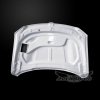Mr.Gigglez
Active Member
- Joined
- Sep 7, 2018
- Messages
- 80
- Reaction score
- 45
- Points
- 18
- Age
- 46
An 18% increase in mpg is impressive. If it carries over to hwy, you should be in the 24-25 mpg range. That is nearing the eco diesel.
I kno this might sound crazy but I'm at 24.5 on the highway... With 36k miles now on the truck I'm seeing awesome mpg's ...city is at around 15.5 to 15.9 sometimes see 16


















